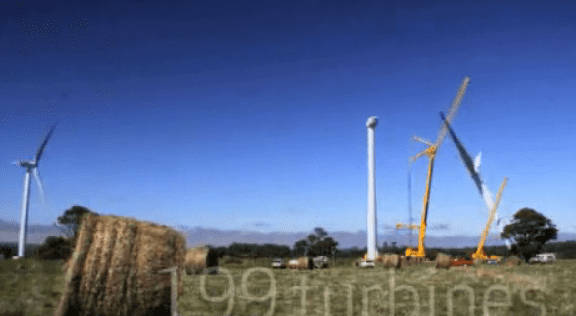The South Australian government has given approval for the development of a $1.5 billion, 197 turbine wind farm on the Yorke Peninsula in the state’s west.
Managed by Senvion Australia for the Suzlon Group, the 600MW Ceres Project – which would be the largest in the southern hemisphere if built – has been approved subject to conditions relating to its construction, operation and infrastructure, including the laying of under-sea transmission cabling that would connect to Adelaide’s metropolitan electricity grid from Port Julia to St Kilda.
In a statement published on the Ceres Project website on Wednesday, the company said that final wind farm layout and conditions for approval included rigorous environmental protections.
“Development approval is a very important milestone for this project and we will now concentrate on completing the connection approval and finalising commercial feasibility,” said Peter Sgardelis, head of development for Senvion Australia.
In an interview with RenewEconomy on Thursday, Senvion Australia managing director, Chris Judd, explained that while most of the conditions of the approval were consistent with past wind developments – and there have been many of them; Senvion has been operating in Australia for 10 years (mostly in its former incarnation, REpower Australia) with over 900MW of wind energy capacity installed over 14 wind farm projects, six in South Australia) – there are a few “more of them” in the context of the Ceres Project, due to the use of underground cabling and the size of the project.
As for the commercial feasibility, Judd said the outcome of the federal government’s RET review would play an important part in how the project matures, both in terms of firming up finance and securing a power purchase agreement (PPA).
“A big portion of that will be influenced by how the RET policy review is undertaken,” said Judd. “We need long-term stable policy from the government to ensure the revenue streams are there for the project.”
But Judd added that the industry had been encouraged by recent comments by Prime Minister Tony Abbott suggesting “appropriately sited” wind energy would be part of Australia’s future energy mix.
On this front, Sgardelis says the company has engaged in months of talks with the local community, including comprehensive consultation with 36 separate landowners.
“We’ve continually listened to the community since we announced the project in 2011,” he said. “We’ve imposed 1.3km setbacks, 600 metre spacing between turbines, no overhead power lines, we’ve adjusted the final layout to address community concerns and we have a policy of ‘prudent avoidance’ in design.”
Senvion (formerly REpower Australia) hopes to commence development later this year, creating up to 500 jobs during construction and 50 full-time maintenance and service jobs during the 25-year life of the project. It will also invest $200,000 a year in a community fund and local fire-fighting projects.
The project is expected to be fully operational by the end of 2016, at which time it would be able to power the equivalent of 225,000 South Australian homes a year.










